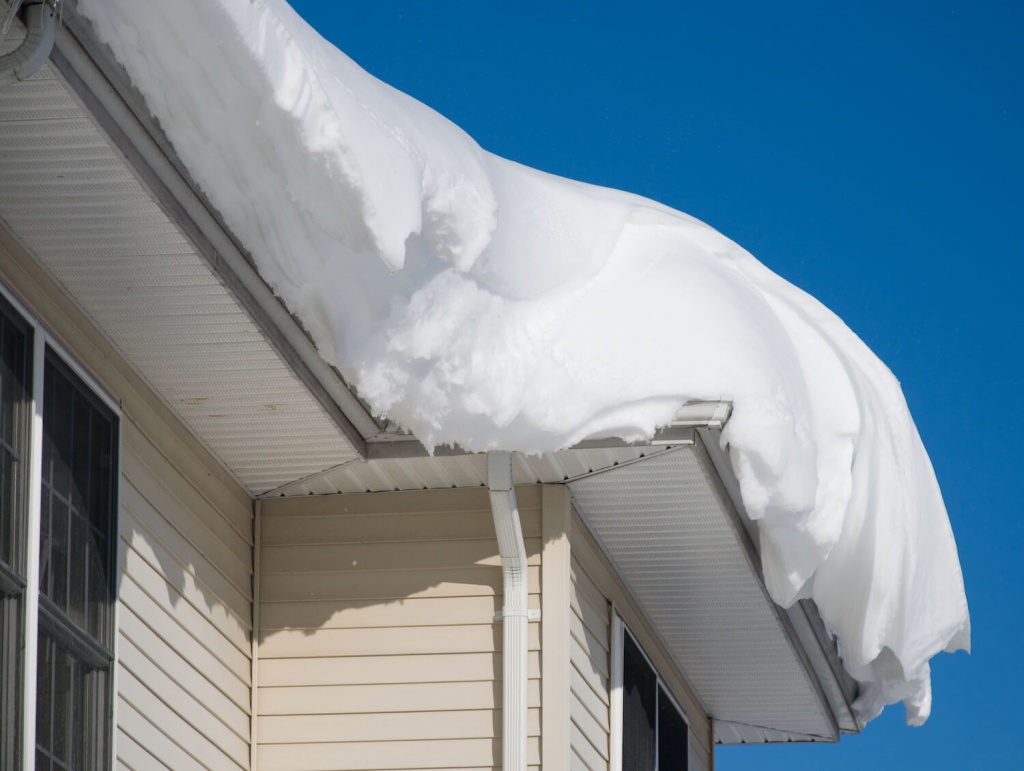Knowing how much snow a roof can hold is essential for anyone living in an area prone to heavy snowfall. Most roofs can support a light dusting, but if snow is many feet thick, the risk of collapse increases substantially, putting occupants in significant danger.

So, how much snow can a roof hold? Let’s take a look.
Roof Snow Limit
Modern roofs can support between 40 and 45 inches of fresh snow or around 20 inches of compacted snow (snow that’s more than a couple of days old).
Roofs are much less able to support ice. An inch of ice corresponds to around 12 inches of snow because it is much denser and heavier.
Homeowners need to be careful during periods of prolonged snowfall. Storms may deposit snow on roofs repeatedly, compacting lower layers and adding to the overall weight.
You can get snow-specific roofs. These have steep angles, forcing snowfall to slough off to ground level, letting you clear it up easily. Most roofs, though, don’t have this feature, catching some homeowners by surprise if the weather is unseasonably cold.
How To Tell Your Roof Is Struggling To Support The Weight Of Snow
There are several telltale signs you should look out for, telling you your roof is struggling to support the weight of the snow above. These include:
- Sagging of the roof, apparent from the ground
- Separation of ceiling joists and beams
- Movement in the flashing around the chimney
- Creaking or difficult-to-open doors and windows
- Signs of interior stress, including changes in the shape of door trims, ceilings, and staircases
Remember, if there is a thick layer of snow on your roof, you may not be able to see some of the signs of stress. Therefore, pay particular attention to interior issues.
How to prevent roof collapse from snow
Fortunately, there are several ways homeowners can prevent roofs from collapsing due to the weight of snow.
Install Heat Cables
Homeowners, for instance, sometimes install heat cables on their roofs. During snow seasons, these put out enough heat to melt income snow and cause it to flow harmlessly as water into your gutters, preventing it from building up in the first place.
Pouring Hot Water On The Roof
Homeowners with existing snow buildup sometimes pour hot water on their roofs. This process melts the snow and reduces the overall weight burden. However, it usually requires climbing onto the roof, which is dangerous without professional assistance.
Keep Gutters And Downspouts Clear Of Ice
Ice is much heavier than snow by volume. Hence, keeping it out of your gutters and downspouts is critical. It can damage them directly or prevent melt water from draining off your roof.
Clearing ice deposits is as easy as applying a deicer or using warm water.
Get A Snow Load Roof
Lastly, consider getting a snow load roof. These are strong enough to survive a winter of heavy snow and come with helpful technologies to mitigate the impact of the weight balancing above. They keep your family safe, no matter what the weather decides to do.










